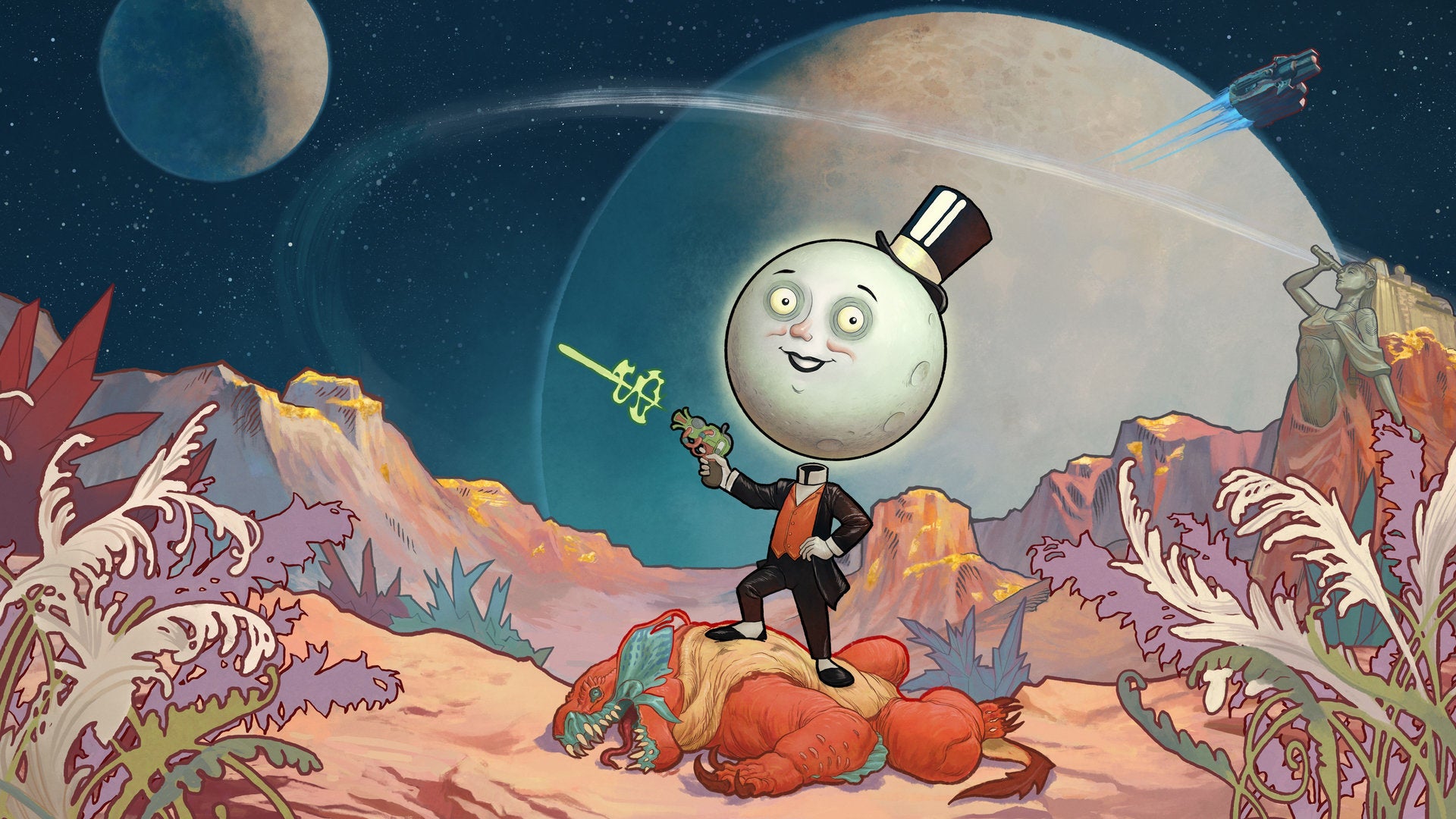It’s hard to believe it’s been six years since the release of The Outer Worlds, and it became one of my favorite RPGs in recent years, until now. The Outer Worlds 2 addresses nearly all the shortcomings of its predecessor. Planet surfaces now feature bigger play areas and more places to explore, weapons are varied and more fun to use, and choices are bountiful and more significant. Obsidian Entertainment has crafted a game that feels like it has existed before you, and will continue to long after you. The Outer Worlds 2 it’s an expansive game that puts the “role-playing” of this RPG in the forefront that will excite many, and satisfy even more.
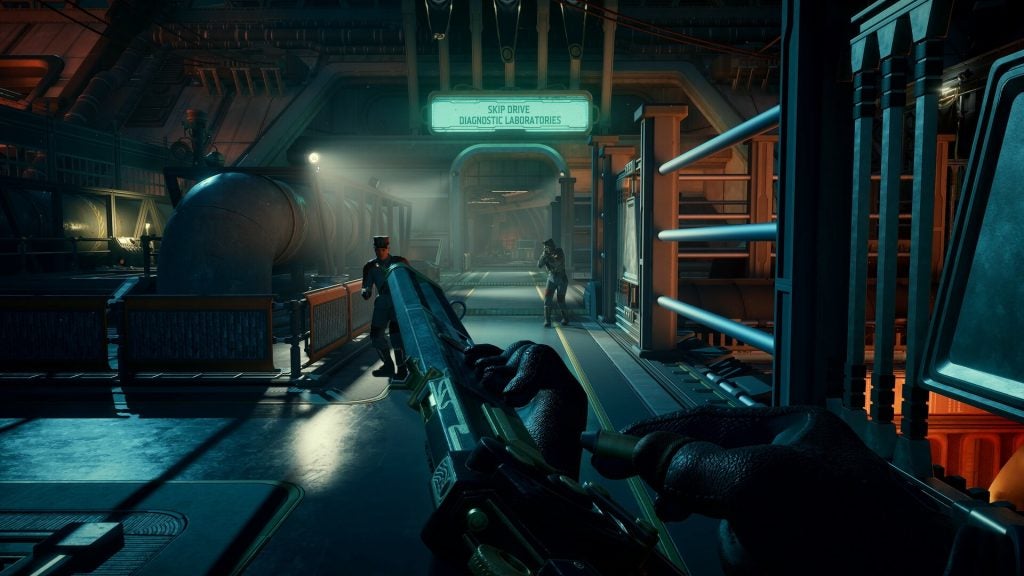
When I previewed The Outer Worlds 2, I was immediately hooked from the prologue and where it left me at its cliffhanger. It also serves as a wonderful tutorial to not only its systems, but the goings on. You play as a completely different character, a Commander in the Earth Directorate. What’s great is that it requires no prior knowledge or needing to recap those events, but on the other side if you were attached to any of those characters, they aren’t present here. This standalone sequel introduces new systems continue to be a corporate dystopia fueled by greed. But now mergers have gone wrong and new factions coming up splinter the human race even further. Ten years after the events of the prologue, you pick up from where you left off to finish what you started. Rift anomalies have appeared, tearing apart space & time. Unlike the last game, The Outer Worlds 2 feels like it has stakes, and it gives the game a sense of urgency and true agency in shaping how these events unfold.
The new character creator allows you to make beautiful people or horrific monsters of your choosing. The tools you’re given are much more involved, and give greater depth into customizing the look exactly how you like it. After that you’ll have to pick two traits, you can pick more, but you’ll have to offset additional traits with flaws. Flaws are a nerf of sorts, but with a humorous twist. Flaws are also discovered over time when playing, triggered by actions. I was presented with ‘Missing Shots’, which gives me a bigger magazine size but if I empty the magazine, then damage is reduced for a short period of time. ‘Hermit’ would make it so it’s harder to sell to vendors, but breaking down weapons for parts increases. My favorite flaw was ‘Bad Knees’, which makes moving while crouching faster, but you make extra noise when you do. You have only one chance to accept them, and they can’t be removed. Once everything is selected, you give yourself a name and resume your adventure among the stars.
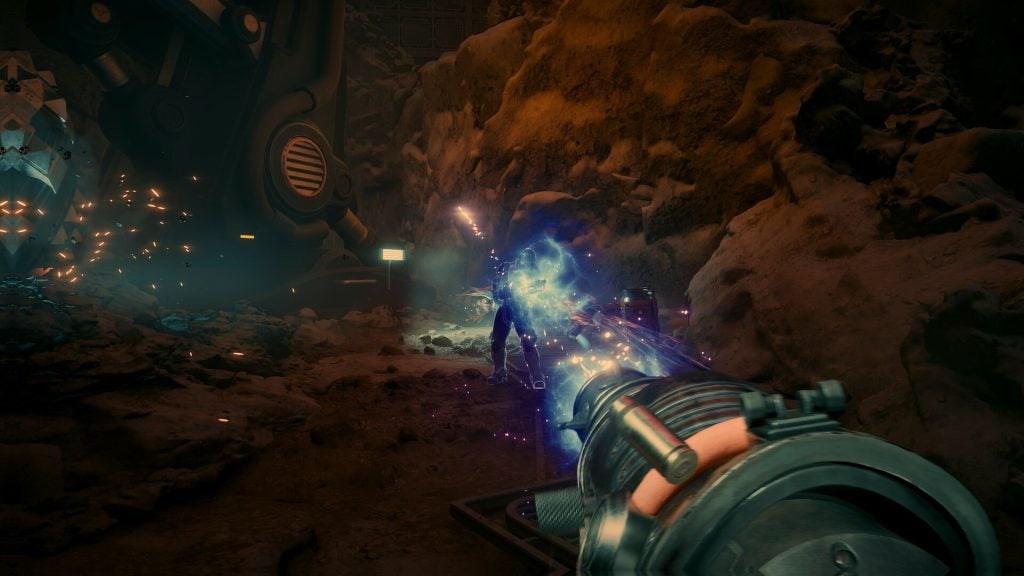
The quests you’ll take part in are almost living entities, reactive to the events you’re taking part in, and the decisions you’re making. Almost always, starting one quest will lead you to one NPC, who in exchange for helping you requests that you help him. So you accep it, and then that next NPC also would like things done on their behalf, and so you agree. It’s a chain of events that leads you to one place after another, splintering into more side quests, all feeding back in to the main quest. It all feels more interconnected with the world around you. Depending on skills you’re equipped with, you might be able to bribe that particular NPC and not partake in their request. Some quests have you following clues on a tablet, that aren’t pointing you exactly where to go, giving you the opportunity to deduce for yourself. Quests can even be sparked simply by overhearing a nearby conversation, and investigating them further will kick them off properly. There’s a great blend of modern and classic quest design here that really works.
Often you’ll be presented with moral quandaries, and tough choices will have to be made. There’s no right or wrong, simple, or easy way to solve a problem that’s presented to you. You’re likely to upset a person or a whole group, but each decision has multiple options available to you. Often you’ll have to make a decision that will be a bad outcome for one group or another. During character creation I selected the ‘Lucky’ trait, so I chose that and actually lucked out to get a solution that wasn’t one of the other choices, or required a skill check. Exploring gray areas is where this game thrives, and early on you’ll play with different save files just to see the various outcomes. It’s not long before you’ll be excited to start a new save and make different decisions for that playthrough.
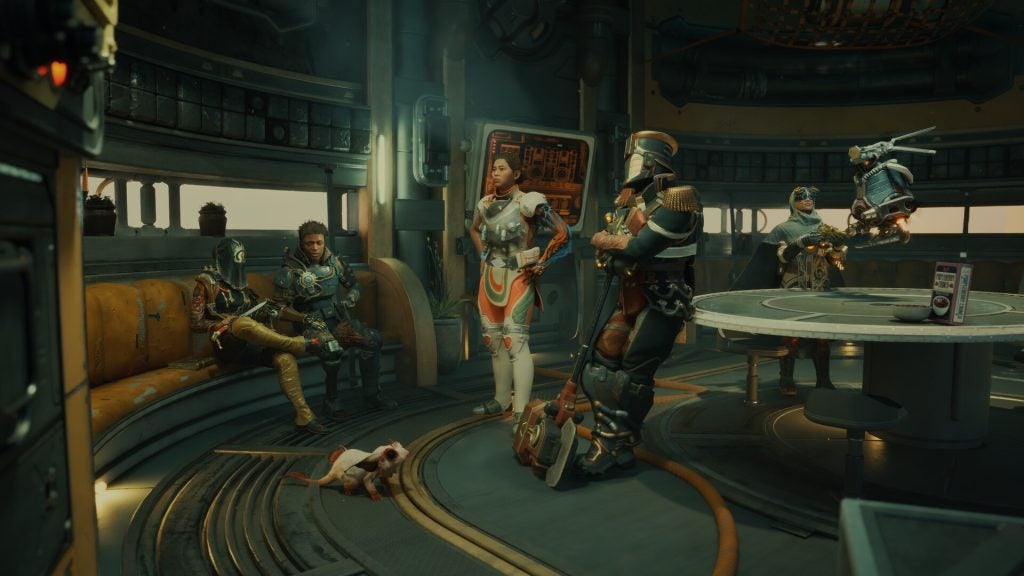
Like the first game, you’ll have companions you’ll have, meet, and take with you on your journey to save the system. You get two companions at the start the game, and will have six in total by the midpoint. VAL is a robotic companion with lots of information that’s helpful in tough situations. Niles is a mobile workbench, allowing you to craft and tinker at any time, to include crafting ammo when you may need it most. Inez can provide health during combat, if you’ve specialized her that way. Some companions get shunned from buildings due to conflicts. Like before, you cannot romance any of your companions. Here they can leave permanently, or even die through the course of the game. There are six new personalities that are all compelling in their own ways, and would be unfair to compare or contrast them to The Outer World‘s crew. The Outer Worlds 2 is more complex, and so are the dynamics of your relationships with them bolstered or shattered by your decisions.
You’ll visit all-new planets and moons, and each of them offer a bigger area to explore than the first game or even Obsidian’s own Avowed. Places like Arcadia features verdant greens, dangerous gases, and too much shellfish. Golden Ridge is rich in reds, golden sunsets, and warring factions. There’s space stations, ships that serve as a merchant hub, and more. There’s way more POIs to explore, and plenty of fast travel points that let you get around these larger areas with ease and minimal frustration.
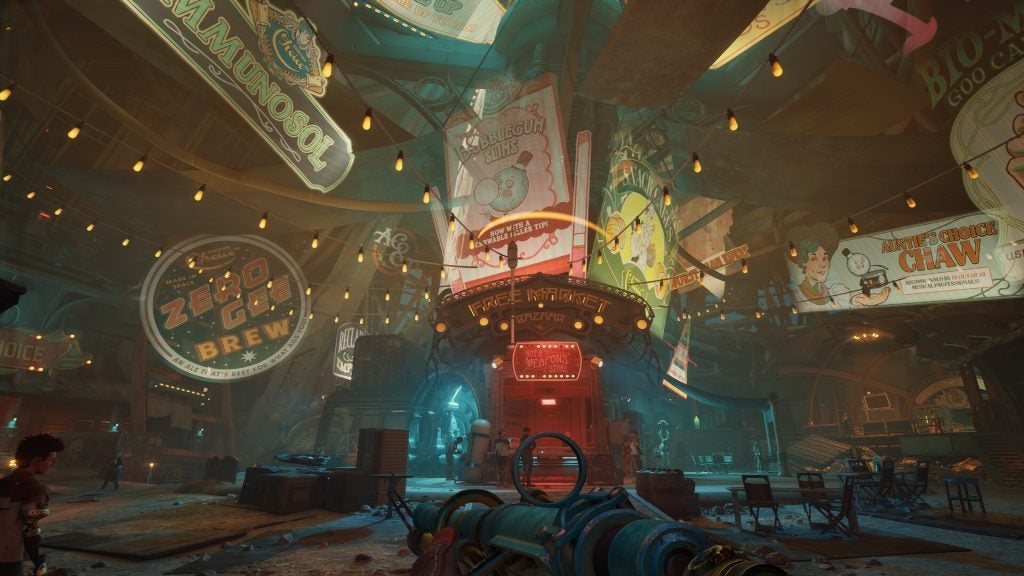
Experience is earned a bit slower than most RPGs, but if you’re completing quests, can go quicker. Similar to the last game, the game caps the player at Level 30 (right now). With each level up, you get to invest two skill points into whatever skills you desire. And every two levels you get to select a new perk that either enhance existing skills, or exploring new ones. You can spend your points how you like, but you’ll want to min-max as you will often be presented with skill checks with higher requirements as you progress. You can’t be a jack-of-all-trades, so difficult choices must be made around how your character is built. Perks are great, I acquired one that gave me a larger magazine size, which has unintended benefits, such as a triple barrel shotgun that has five shots.
In an attempt to streamline the game and deal with everyone’s least favorite mechanic: encumbrance. There’s no weight limit for your inventory, this also means there’s no player storage to offload items, and things can get unwieldy. Though you can sprint infinitely now, which is a welcome addition. One change some might notice is that skills are no longer hierarchical or categorized. Before you could invest in stealth which could lead to hacking, now it is it’s own thing, separate from the others. You can’t respec, so be careful with your selections. A lot of the game is parlay, engaging in conversation is how you’ll gain information, diffuse tense situations, or relying on your background, traits, or skills to enhance it. It’s good to be mindful with regards to the type of character you are molding.
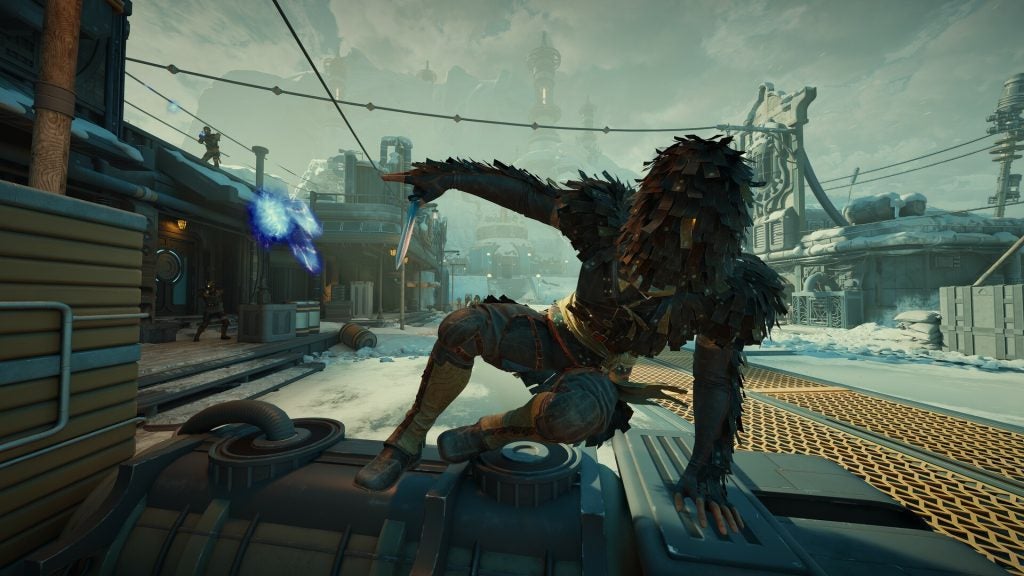
The decision to make the weapons something that required skill to use that wasn’t dictated by points spent was a great decision. It makes the game feel like a proper first-person shooter, and skills and perks can enhance how those weapons behave. You’ll have your share of pistols, shotguns, rifles, assault rifles, and more. Standouts are ones that shoot chain lightning or machine guns that just spit bullets, shredding enemies in seconds. Melee weapons offer sharp and blunt options, and can be modded with elemental properties, often of your choosing. Weapons are more randomized when they drop, alongside special weapons acquired from missions or certain locations if their puzzle is solved.
Gadgets get some love this time around. Returning is the time dilation tool which slows down time to take careful aim or dodge a hazard, safely. Now there’s a gadget that’ll help you dispose of bodies if you’re a stealth player and don’t want to alarm any patrolling guards. Or you’ll put on a mask that sees through walls and helps you solve certain puzzles. As an aside, wearing location appropriate attire does not let you disguise yourself from being discovered, even for a little bit, that whole system is gone. There’s a new threat in the form of Zyranium Gas which is a hazard but can kill you quickly and poison you long-term. There’s a gadget that can shield you from it temporarily. There are even weapons based on this as an ammo time. Visiting doctors and medical stations can heal you and remove those toxins.
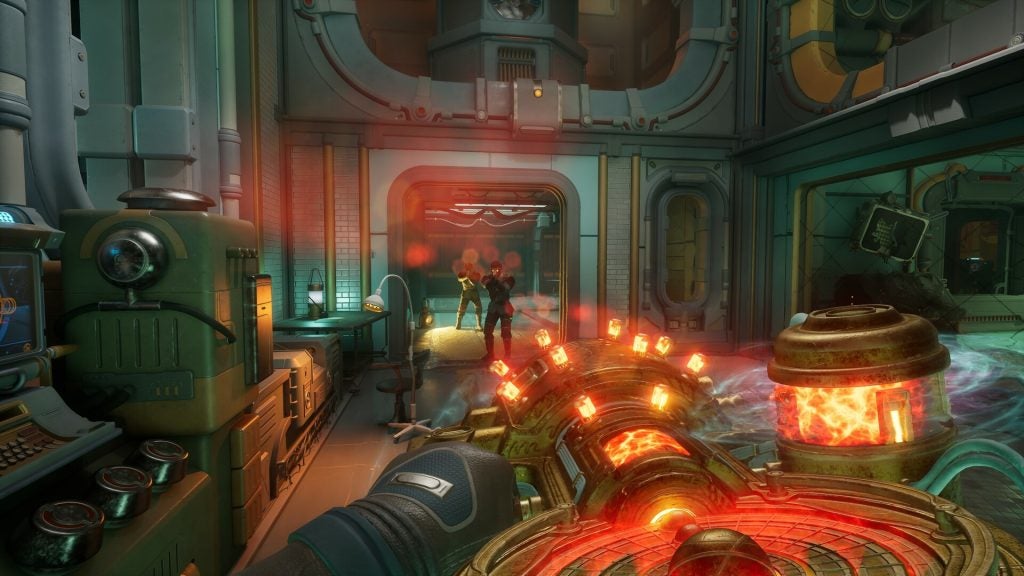
The Outer Worlds 2 gets you thinking creatively almost all the time. If an elevator is shut down, you can just climb the environment or have necessary skill to repair it for use. If a door is locked, you could pick the lock it or pickpocket the key from someone nearby. Early in the game, I completed a quest that gave me a jump pack that allowed me to double jump. In returning to a previous area, I was now able to bypass a door that I didn’t have the requisite skill for by just climbing on top of to find an opening that wasn’t available before.
There are now two third-person cameras if you choose to play the game this way. I didn’t particular care for it, but the implementation of it is much improved, and even gives the option to shoulder swap. Additionally, there’s a flashlight to help see you in the dark, but enemies can see it, and could give you away. A cool detail is that throughout your journey, certain side quests of collectibles will result in those items being placed in your ship, like trophies.
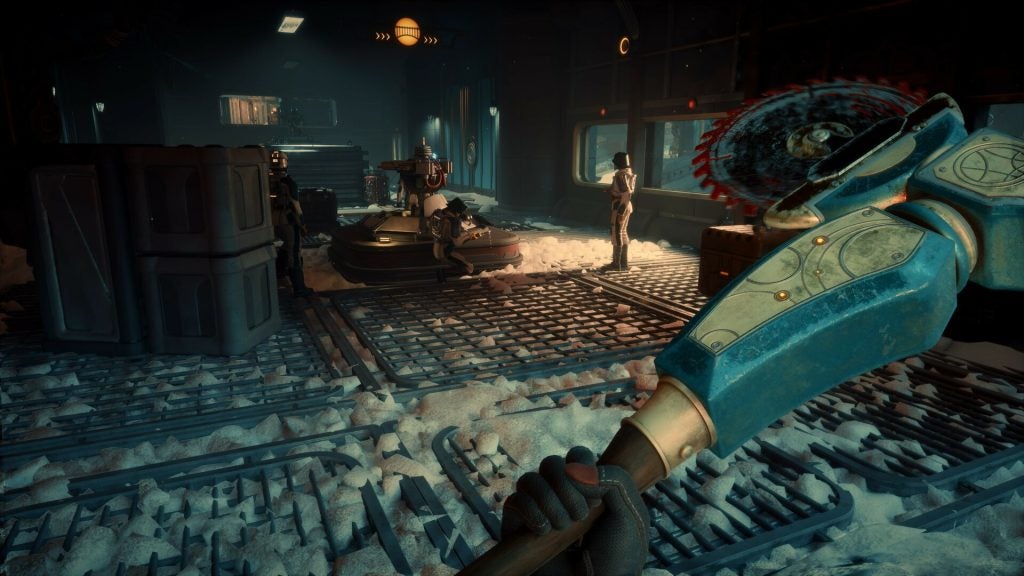
Perhaps a bit of a spoiler, but the main menu breaks the fourth wall in such a wonderful way that makes me smile. The enigmatic Moon Man will speak to you, and present you dialogue options for going into the settings or loading a save. It’s reactive, fun, and different that I can’t help but mention where Obsidian really just goes above and beyond.
While it is clear that I love a lot about this game, it’s not without its faults. The planets and moons you’ll visit will now have water on them, but jumping into it like you would in Avowed results in instant death. It feels as bad as it sounds. I did experience one bug that prevented me from completing a companion quest, as I seemingly broke the sequence of acquiring a companion that would continue to trigger a certain dialogue conversation over and over, and not mark the sub-objective as complete. Most of the puzzles are good, and give way to worthwhile rewards, but I can’t say that for all of them. There was one puzzle located in an observatory that was unreasonably obtuse, and the rewards were paltry for the level of effort. Thankfully this is the exception, and not the rule. For a majority of my time with the game, nothing was out of place or outright broken, which is great for an RPG of this magnitude.
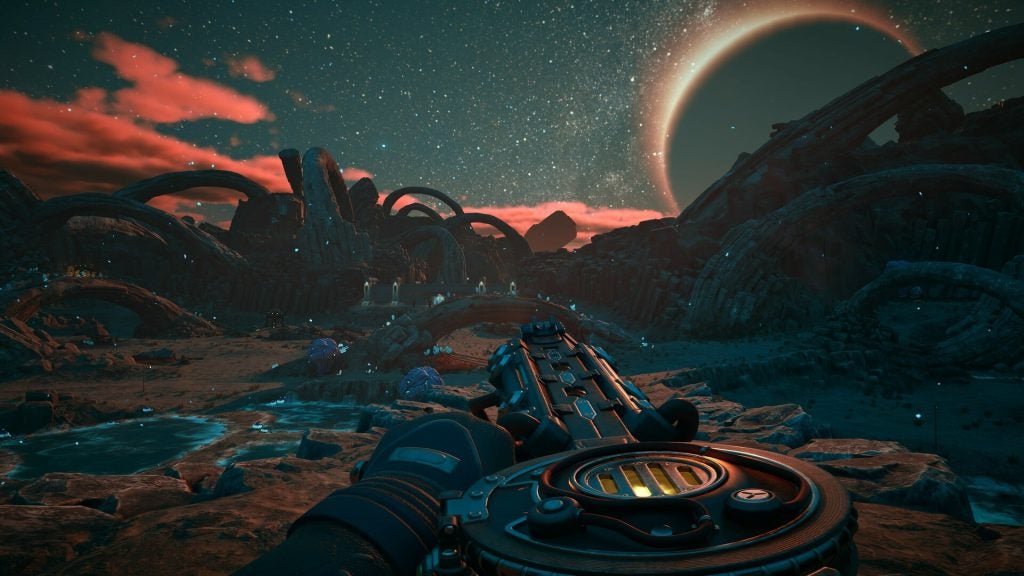
The jump from The Outer Worlds using Unreal Engine 4 to Unreal Engine 5 for this are not only seen, but felt, for good and bad reasons. I have played this game before and after the release of NVIDIA GameReady Drivers (version 581.57). Performance before wasn’t bad, but I was averaging 70-80fps with DLSS set to Quality, Ray Tracing turned off, and Frame Generation enabled with all settings set to ‘Very High’ (the max). With the new drivers I’m seeing wider variations and fluctuations, but I average closer to 100fps now. Overall, The Outer Worlds 2 has a clearer and crisper image quality that really pops with every neon sign, sunset, or interior you walk through, especially on an ultrawide monitor. It’s a gorgeous game where it’s performance on PC is a positive experience without stutters or being overly demanding.
My PC Specs:
– Microsoft Windows 11 Pro
– Intel Core i9 13900K @ 5.8GHz
– ASUS ROG RYUJIN II 360 ARGB AIO Liquid CPU Cooler
– G.SKILL TRIDENT Z5 6000MHZ 64GB (32×2) DDR5 RAM
– ASUS ROG Strix GeForce RTX 4080 16GB GDDR6X
– WD_BLACK SN850X M.2 (4 TB)
– LG UltraGear 34GP950B-G (21:9 Ultrawide @ 3440×1440)
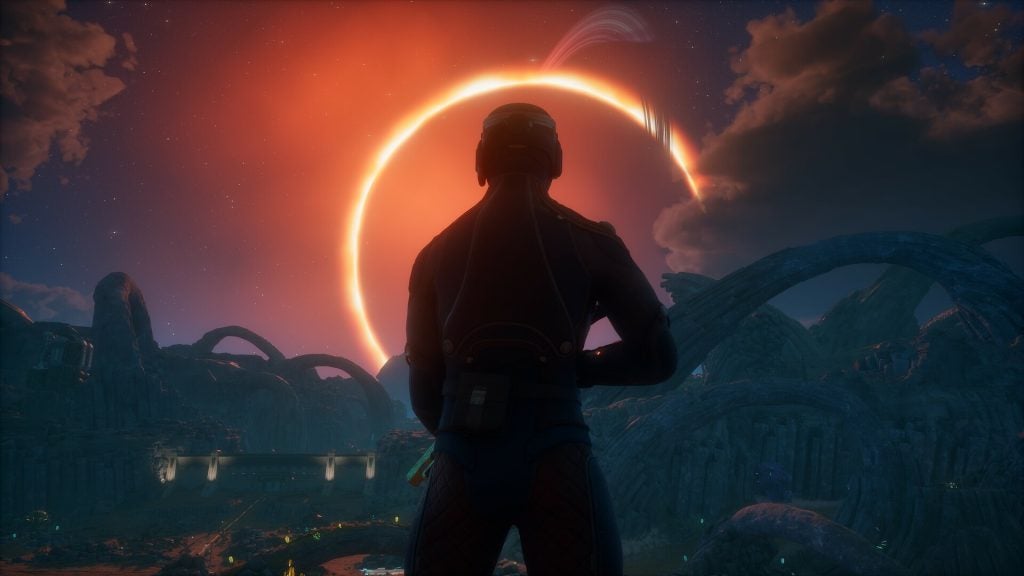
Obsidian Entertainment continues to make better sequels, even to their own games, and The Outer Worlds 2 surpasses the prior game in every way. Obsidian has honed in on the tone, and the anti-capitalist dark humor is much more even, and full of laugh out loud moments. Compelling companions, better combat, and rich quests makes everything feels so reactive and symbiotic to your action, or inaction. Decisions are presented to you around every corner, and with so many branching paths, it encourages experimentation and ensures you’ll replay it. The Outer Worlds 2 is a stellar sci-fi RPG to be an instant classic.
A Steam code for the Premium Edition was provided in advance by Xbox for review purposes
